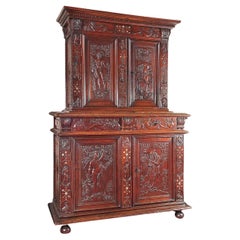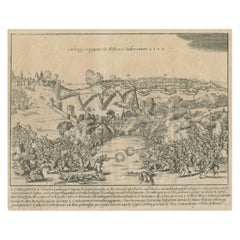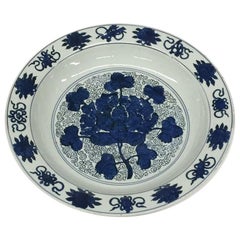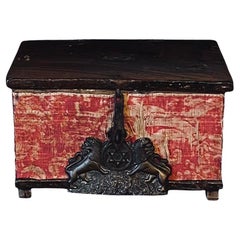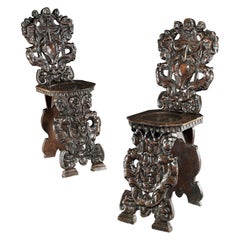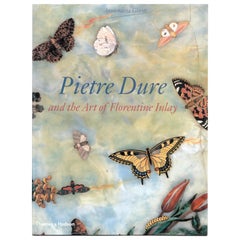16th Century Furniture
to
251
740
393
1,176
36
24
18
7
5
3
1
1
40,555
134,851
550,507
285,557
85,676
261,029
125,441
12,807
5,631
18,703
22,906
19,654
54,161
72,478
61,164
21,605
9,220
421
256
210
160
149
685
275
209
131
117
1,176
1,176
1,176
20
6
3
3
2
Period: 16th Century
Rare Renaissance Cabinet Richly Carved
Located in Saint-Ouen, FR
This rare Renaissance cabinet is richly decorated on the doors and drawers with carvings depicting the four seasons, and on the uprights and the entablature, alternating flower bouquets inlaid with mother of pearl. This is a beautifully conceived piece of furniture, representing a crowned portico with its entablature and cornice.
The upper body
Articulated separately in a ternary rhythm, as with the lower body, the upper part opens with two carved doors. The doors are framed by both the lateral uprights and the casing. There are cartouches carved into the casing in which mythological figures are depicted with flower bouquets.
On the doors:
On the right: Spring, a female figure crowned with a wreath of leaves, holding a basket full of flowers. She is wearing necklaces and bracelets on each arm, with drapery discretely wrapped around her body and is standing on a winged putti’s head. On each side are depicted a tree and a village with a steepled church. Above her head floats the three signs of the zodiac corresponding to the season: Aries, Taurus and Gemini.
On the left: Summer, a bearded man crowned with ears of corn and bearing armfuls of corn. He is standing on a similar winged putti, flanked by a tree and an ear of corn. The following three signs of the zodiac appear: Cancer, Leo and Virgo.
On the uprights and the central casing a number of smaller figures seem to represent virtues and vices that newly wedded couples should aspire to and avoid.
On each side, at the bottom of the uprights, there is a dog representing fidelity. Above, a lion embodies power, wisdom, and justice.
In between, on the left upright, there is a figure of noncombatant Athena wearing a helmet and holding a spear, an arrow pointing down and in her left hand, a shield, symbol of protective power. On the right upright, the goddess Venus controls the arrow of Cupid.
The iconography here acts as a clear reminder of the required virtues that both parts of a young couple need to fulfill: fidelity, power, wisdom and justice. For him, the goddess Athena focuses on the power. Whereas for her, it is Venus who shows how to control Cupid’s arrow.
On the central casing at the bottom, by way of contrast, there is a peacock, a symbol of pride and at the top, a monkey representing lust and mischief. In between, a woman holding a chain and a cup full of precious stones while on the floor sits a half empty opened casket. This can be interpreted as a symbol of extravagance.
Above, the entablature, decorated with male figures resting on leaking urns, may symbolize the passing of time. They are flanked by two consoles decorated with acanthus leaves and separated by flower bouquets (inlaid with mother of pearl). Finally on top, a cornice acts as a crown for the piece of furniture.
The lower body
The moulded base stands on four round, flattened feet.
Represented on the doors:
On the left: Autumn, a stocky, naked man crowned with vine leaves, holding fruits in his right hand and with his left, picking a bunch of grapes from a climbing vine. Standing on a mound, he is surrounded by a vine and a hill, at the foot of which a man presses the grapes in a big vat after the harvest. Above the climbing vine appear the signs of Libra, Scorpio and Sagittarius.
On the right: Winter, an elderly man wearing a fur cloak...
Category
French Renaissance Antique 16th Century Furniture
Materials
Walnut
Capture of Limburg by Spanish Forces under Duke of Parma, 1578 - Engraving
Located in Langweer, NL
This engraving illustrates the capture of Limburg by Spanish forces under the command of Alexander Farnese, Duke of Parma, in 1578 during the Eighty Years' War. The scene vividly dep...
Category
Antique 16th Century Furniture
Materials
Paper
$278 Sale Price
20% Off
Chinese Blue and White "Grape Dish", Ming Dynasty, 16th Century, Jiajing Period
Located in Delft, NL
Large Chinese Blue and White "Grape Dish",
Ming Dynasty, Jiajing Period, 16th Century
Large blue and white "Grape Dish".
Ming dynasty (1368-1644),
Jiaj...
Category
Chinese Ming Antique 16th Century Furniture
Materials
Porcelain
Antique Extremely Rare Judaica Tzedakah Synagoge Charity Box 16th Century
Located in Doha, QA
This 16th century Tzedakah Charity Box is an incredibly rare and unique museum quality piece. It’s made out of walnut wood and has an original 16th century silk material all over it from outside as well as in the inside, bronze plug in the front and the Star of David with two lions from the left and right side of the Star. There are also two round bronze handles to lift the box from both sides. The Tzedakah Box...
Category
Spanish Gothic Antique 16th Century Furniture
Materials
Metal
Chair Stool Hall Sgabello Pair 16 Century Venetian Renaissance Carved Sculpture
Located in BUNGAY, SUFFOLK
The quality of these exhuberant backstools demonstrate why Italian Renaissance furniture was as highly prized as old-master paintings. Th...
Category
Italian Renaissance Antique 16th Century Furniture
Materials
Walnut
Pietre Dure and the Art of Florentine Inlay by Annamaria Giusti (Book)
Located in North Yorkshire, GB
The art of decorative stone work - known as Pietre Dure, or polychrome hardstone inlay resurfaced in Rome in the sixteenth century with the flowering of the Italian Renaissance. Tabl...
Category
Antique 16th Century Furniture
Materials
Paper
16th Century Antique Brussels Tapestry 5'2" x 2'8"
Located in Los Angeles, US
A wall hanging tapestry, simply put, is a textile specifically designed and woven to portray an artistic scene with the intent of hanging it on a wall. Antique tapestries, those that...
Category
Unknown Other Antique 16th Century Furniture
Materials
Wool, Cotton
Bronze Mortar - Italy - 16th Century
Located in Brussels, Brussels
Superb Italian Renaissance bronze mortar with his pestle - 16th century
Very beautiful model with AN in its center surmounted by a cross below .
The mortar is decorated with several...
Category
Italian Renaissance Antique 16th Century Furniture
Materials
Bronze
Hand-crafted Gothic 16th century panel in oak, Belgium
Located in Meulebeke, BE
Belgium / 16th century / wooden sculpted panel / oak / Gothic / Rustic / Antique
A panel in oak wood enriched with Gothic graphic carvings. Hand carved in Belgium in the 16th centur...
Category
Belgian Gothic Antique 16th Century Furniture
Materials
Oak
Large 16th Century Tuscan Wedding Chest Called "Cassone"
Located in Saint-Ouen, FR
Large wedding chest in tinted and gilded walnut, the lid animated with a frieze of pearls, the sides with compartments, the belt decorated with gadroons. It rests on four claw feets.
Category
Italian Renaissance Antique 16th Century Furniture
Materials
Walnut
Antique Chinese Cloisonne Arrow Vase Early Possibly Ming 16th Century
Located in Wilton, CT
Antique Chinese cloisonne on copper arrow vase, possibly Ming Dynasty 16th century. Bottle form with pair of "arrow" tubes on either side of ...
Category
Chinese Ming Antique 16th Century Furniture
Materials
Copper
French Richly Carved Sideboard Buffet - Renaissance- circa 1580 France
Located in Beuzevillette, FR
Beautiful Renaissance two-body buffet with four doors and six drawers.
On the upper part of the buffet, who hide two secrets drawers, an alternating band of three masks, represents a mythological scene: Zeus changed into a swan seduces Leda on the banks of the Eurotas. The sides of the buffet are decorated with foliage and vines. The doors cornices...
Category
French Renaissance Antique 16th Century Furniture
Materials
Walnut
Brussels 16th Century 18" X 15" Pillow
Located in Los Angeles, US
Add a touch of Renaissance charm with our Brussels 16th Century Pillow. Measuring 18" x 15", its timeless design and generous size make it a luxurious addition to any sofa or bed
Category
American Mid-Century Modern Antique 16th Century Furniture
Materials
Wool, Cotton
$2,560 Sale Price
20% Off
Mercator's Ptolemaic Map of Ancient Assyria, Media, and Persia
Located in Langweer, NL
This map, "Asiae I Tab:", features the region corresponding to modern-day Iran and Iraq, intricately depicted in Gerard Mercator's edition of Claudius Ptolemy's "Tabulae Geographicae...
Category
Antique 16th Century Furniture
Materials
Paper
$1,095 Sale Price
20% Off
A late 16th century French Renaissance richly carved walnut center table
Located in PARIS, FR
A late 16th century Renaissance richly carved walnut center table
France, The Loire Valley area
Dimensions: h. 33.46 in., w. 59.45 in., d. 36.22 in.
Our remarquable table is a fabu...
Category
French Renaissance Antique 16th Century Furniture
Materials
Walnut
$24,019 Sale Price
20% Off
Spanish Azulejo Tile Arista / Cuenca - Toledo 16th century
Located in DELFT, NL
Early Arista / border tile made in Toledo. Tile decorated in renaissance with stylized flowers was probably made between 1550 and 1575.
Catalogue: La Azulejería Toledana a Través ...
Category
Spanish Renaissance Antique 16th Century Furniture
Materials
Earthenware
Huy (Huum) Cityscape 1574: Historical Copper Engraving by Braun & Hogenberg
Located in Langweer, NL
Title: Huum opp. condrusorum caput (...) Anno partae salutis 1574.
**Type:** Print (Colored Copper Engraving)
**Year:** Circa 1580
**Technique:** Colored Copper Engraving
**Medium:...
Category
Antique 16th Century Furniture
Materials
Paper
$614 Sale Price
20% Off
Antique Buddhist Alter Shrine 17-16'th Century
Located in Kastrup, DK
Rare Buddhist alter shrine, made in pine wood.
Rich on carved figural sceneries.
Original polychrome lacquer, beautiful and untouched condition.
From Shanxi Province in China.
Category
Chinese Ming Antique 16th Century Furniture
Materials
Pine
Renaissance Period Hand Carved Oak Panels, 16th Century
Located in Beuzevillette, FR
Set of two 16th century oak panels, one representing a character accompanied by a dog, the other a character in flames, probably saints.
These ...
Category
French Renaissance Antique 16th Century Furniture
Materials
Oak
Duchy of Brunswick-Lüneburg, 1595: A Renaissance Cartographic Masterpiece
Located in Langweer, NL
Title: "Braunschweig and Lüneburg Duchies: Authentic Depiction by Abraham Ortelius"
This is an exquisite example of Abraham Ortelius’s cartographic craftsmanship: an original antiqu...
Category
Antique 16th Century Furniture
Materials
Paper
$336 Sale Price
20% Off
Throw Pillow Made from 16th Century Flemish Tapestry
Located in Los Angeles, US
16th Century Flemish Tapestry Pillow 19" X 12"
Category
Empire Antique 16th Century Furniture
Materials
Wool
16th century Brussels 13" x 9" Pillow
Located in Los Angeles, US
Indulge in the opulence of the Renaissance era with our exquisite "Renaissance Splendor: 16th Century Brussels Pillow," measuring 13" x 9". This unique pillow captures the grandeur o...
Category
Unknown Mid-Century Modern Antique 16th Century Furniture
Materials
Wool, Cotton
$1,008 Sale Price
20% Off
Large Annamese Blue and Enameled Ceramic Box, Chu Dau kiln, Vietnam
Located in Point Richmond, CA
Large Annamese Blue and Enameled Ceramic Box, Chu Dau kiln, Vietnam, circa 1500. The
cover with a flat top decorated with landscape design of mountains and tre...
Category
Vietnamese Folk Art Antique 16th Century Furniture
Materials
Ceramic
Spanish Azulejo Tile Fragment Arista y Cuenca - Toledo 16th century
Located in DELFT, NL
Early Arista y cuenca tile made in Toledo. Tile decorated in renaissance style with interlacing lines ending in four stylized flowers was probably made between 1550 and 1575.
Category
Spanish Renaissance Antique 16th Century Furniture
Materials
Earthenware
1579 Ornate Map of Burgundy County by Ferdinand de Lannoy
Located in Langweer, NL
1579 Ornate Map of Burgundy County by Ferdinand de Lannoy
Description of the Map:
This is a beautifully detailed map of the Burgundy region, titled "Bvrgvndiae Comitatus Recentiss....
Category
Antique 16th Century Furniture
Materials
Paper
$951 Sale Price
20% Off
18th Century Handmade Terracotta Olive Jar, Vase with Two Handles, Spain
Located in Miami, FL
This is a terracotta olive jar from central Spain. It has a wonderful aged patina with chalky painted finish. It makes a great statement as a sculpture in a room on a pedestal, alone...
Category
Spanish Baroque Antique 16th Century Furniture
Materials
Terracotta
16th Century Oil on Canvas Italian Religious Painting Madonna with Child, 1520
Located in Vicoforte, Piedmont
A rare 16th-century Italian painting. An oil on panel painting depicting a refined Madonna with Child, this artwork is of extraordinary pictorial quality. The most popular iconograph...
Category
Italian Antique 16th Century Furniture
Materials
Canvas
Healing of the Paralytic. Oil on panel. Castilian School, 16th century.
Located in Madrid, ES
Healing of the Paralytic. Oil on panel. Castilian School, 16th century.
Partially rebuilt.
A religious scene set in a prestigious interior, made of two-tone stone, depicting a ser...
Category
Spanish Renaissance Antique 16th Century Furniture
Materials
Other
16th Wrought Iron Safe, Renaissance Style, for Donations or Cash Chest
Located in Marbella, ES
Impressive wrought iron tabletop safe with engraved decoration and original patina. This type of safe was commonly used in the 16th and 17th centuries to hold valuables, alms, or doc...
Category
Spanish Antique 16th Century Furniture
Materials
Iron
Exceptional Italian Renaissance Cassone with Rich Carving on a Gilt Background
Located in Saint-Ouen, FR
The lower part of the facade is adorned with a foliated and fruit garland.
The facade’s central panel bears a low-relief decor framed by a rais-de-cœur frieze. The central scene a...
Category
Italian Renaissance Antique 16th Century Furniture
Materials
Walnut
Annamese Blue and White Ceramic Dish, Bird Design, Chu Dau kiln, Vietnam, 1500.
Located in Point Richmond, CA
Annamese Blue and White Ceramic Dish, Bird Design, Chu Dau kiln, Vietnam, circa 1500. A sturdily potted plate with raised rim, decorated in under glaze cobalt ...
Category
Vietnamese Other Antique 16th Century Furniture
Materials
Ceramic
Antique Map of the City of Visby 'Sweden' by F. Hogenberg, 1598
Located in Langweer, NL
This is a wonderful bird's-eye plan/view of the oldest city in Sweden.
Visby, the largest city on the island of Gotland was an important Viking city and the main centre of the Hanseatic League...
Category
Antique 16th Century Furniture
Materials
Paper
$2,353 Sale Price
20% Off
Early English or Scottish Turner's Chair
Located in Greenwich, CT
Rare Elizabethan or Jacobean turned fruitwood and ash three legged chair, often referred to as a "thrown" chair because all the parts are turned on a lathe (think thrown as on a pott...
Category
Scottish Elizabethan Antique 16th Century Furniture
Materials
Ash, Fruitwood
Bronze Siamese Asian Buddha Antiquity Hand Sculpture Fragment, 15th-16th Century
Located in Studio City, CA
A wonderful and very special piece.
This bronze buddha hand sculpture, perhaps a fragment of a larger piece at one time, originally came from the prestigious Doris Wiener Gallery ...
Category
Asian Antique 16th Century Furniture
Materials
Bronze
Throw Pillow Made from 16th Century Flemish Tapestry
Located in Los Angeles, US
16th Century Flemish Tapestry Pillow 20" x 20", Authentic 16th Century piece handmade
Category
Turkish Empire Antique 16th Century Furniture
Materials
Wool, Feathers
Adoration of the Magi, Catalan Baroque, S.XVI Dated 1527, Oil on Wood
Located in CABA, AR
Catalan Baroque S.XVI
The Adoration of the Magi
Oil on wood
92cm x 68cm
Dated 1527
At the beginning of the Renaissance period, Gothic forms coexisted in Catalonia with other new solutions, in which religious fervor was mixed with the attention to detail of everyday life.
Following the medieval tradition, the altarpieces are thought from a narrative vision, and flat painting...
Category
Spanish Baroque Antique 16th Century Furniture
Materials
Wood
$28,000 Sale Price
20% Off
Antique 16th C Ming Jiajing Stemcup Chinese Porcelain Blue and white in Tibet
Located in Amsterdam, Noord Holland
Sharing with you this lovely stemcup with wrapping.
Dating: Jiajing, 16th century.
Condition:
Size: DiameterxHeight
Condition
Rimfritting, 3 hairlines. Size 13 x 10.5cm
Period
16t...
Category
Chinese Ming Antique 16th Century Furniture
Materials
Porcelain
"Madonna with Child and Angels". Italy, 15th-16th Centuries
Located in Madrid, ES
Bronze in its color and gold, lapis lazuli, rock crystal, enamel.
In the centre of the work is presented, enthroned, the figure of Mary, with a mantel (fireplace) on her shoulders and hair and holding on her knees the child, who appears addressing one of the angels. The virgin is also sheltered by an ogee arch supported on turned columns, and raised visually by steps. This composition achieves a very striking contrast: the dark bronze figure, in contrast to the lapis lazuli background and the part of the arch and the outside of it, in gilded bronze. Under the steps there is a heraldic enamel shield with a key on an azure background. The angels, kneeling, are flanking this figure, and, appearing in dark bronze, visually share the "category" of religious figures with Mary, while their (lower) position gives more status to both the Mother and Jesus. The rest of the composition is completed with a delicate landscape: constructions and walls on mountains, clouds in the sky, plants, stones, etc. To the outside, another lapis lazuli frame is placed decorated in the corners with appliques, giving way to carved and polychrome wood. The lapis lazuli is a semiprecious stone already known in the seventh millennium BC., found in deposits from the Caucasus to Mauritania. From the end of the middle ages, it increased its export to Europe, its use being more frequent since then both to use it as a pigment in paintings after grinding it (giving rise to the finest and most expensive of the blues, and of the colors in many occasions), as for backgrounds of paintings, incrustations in works of art, jewelry and, a little later, in the well-known "hard stone works". The figure of Mary still shows an influence of Gothic models, although more European than Italian, along with elements that could already show a closeness to the Renaissance: although the nakedness of Jesus is already shown in Gothic works (Madonna with Angels by Fra Angelico ), the creation of space by playing with the cloth in front of Christ can be appreciated in more advanced paintings (Virgin with Child by Domenico Ghirlandaio, National Gallery of London); the presence of a powerful throne can be seen frequently in Italian Madonnas of the Quattrocento (and before), but not quite as presented here. As for the landscape, it is necessary to compare it, for example, with that of the fresco of the Condotiero Guidoriccio de Fogliano (Simone Martini, finished in 1328). This is a work of great technical and aesthetic quality, not to mention the materials chosen for its creation, comparable only to outstanding examples from around the world, such as those preserved in the Palazzo Madama in Torino (Italy), where the coral It also has an important role. It is essential to mention, also, works such as the plate of hard stones (lapis lazuli between them) with a relief of Mary with the Child in...
Category
Italian Renaissance Antique 16th Century Furniture
Materials
Lapis Lazuli, Bronze, Enamel, Other
Brussels 16th Century - 19" x 9"
Located in Los Angeles, US
Good Condition, Original Design Modified.
Category
Belgian Empire Antique 16th Century Furniture
Materials
Wool, Feathers
$2,000 Sale Price
20% Off
16th Century Thai Ayutthaya Sandstone Torso of the Buddha
Located in Austin, TX
A lovely carved sandstone torso of the Buddha, Ayutthaya period (1350-1767), Thailand.
Wonderfully simplistic, the only ornamentation this torso displays...
Category
Thai Antique 16th Century Furniture
Materials
Sandstone
Spanish Moorish Mudejar Olambrilla Tile, Cuerda Seca - Sevilla 16th century
Located in DELFT, NL
Rare early 16th century Mudejar tile of the so-called ‘Aristo’ or 'cuerda seca' technique.
Polychrome tiles had long been made in Spain in the cuerda seca (dry cord) technique, dati...
Category
Spanish Renaissance Antique 16th Century Furniture
Materials
Earthenware
Entrance door of a city Moughal XVI-XVII century
Located in Mexico City, MX
Entrance door of a city
Moughal XVI-XVII century
North of India
Deeply carved Teak wood with floral desigs
With iron rings and sticks to avoid the elephant hits .
Maharashtra, ...
Category
Indian Antique 16th Century Furniture
Materials
Wood
Antique Slate Portal for Door, Black Frame from Genoa, 16th Century, Italy
Located in Cuneo, Italy (CN)
Ancient slate portal, black frame carved by hand with motifs of the time, very old and in perfect conservation conditions, of great value of the material and of the sculpture, and of...
Category
Italian Antique 16th Century Furniture
Materials
Slate
$8,166 Sale Price
20% Off
16th century Brussels pillow 15x11
Located in Los Angeles, US
This exquisite vintage pillow highlights a rich 16th-century Brussels tapestry design, adorned with vibrant fruits and floral motifs in earthy tones. The finely woven craftsmanship r...
Category
Unknown Mid-Century Modern Antique 16th Century Furniture
Materials
Wool, Cotton
IMPORTANT TRIPTIC FLORENTINE SCHOOL (Italy) 16th Century
Located in Madrid, ES
IMPORTANT TRIPTIC
FLORENTINE SCHOOL (Italy) 16th Century
Oil on wood, representing the Eternal Father, Our Lady with Baby Jesus, Saint Bernadino of Siena, San León, Saint Stephen an...
Category
Italian Gothic Antique 16th Century Furniture
Materials
Paint
Pair of Islamic Enameled Vessels, Ancient Urns
Located in Vero Beach, FL
This is an exceptional and historic pair of Damascus enameled metalwork vessels or urns. These art objects show signs of rough use and handling through the centuries. Although it is ...
Category
West Asian Islamic Antique 16th Century Furniture
Materials
Enamel
$4,240 Sale Price
20% Off
Chest. Carved wood, metal. Spanish school, 16th century.
Located in Madrid, ES
Chest. Carved wood, metal. Spanish school, 16th century.
Rectangular casket with a flat lid decorated on the outside with a series of figurative reliefs in a symmetrical arrangemen...
Category
Spanish Renaissance Antique 16th Century Furniture
Materials
Metal, Other
Ancient Jain Altarpiece with Three Standing Jina's, Gujarat, India 16th Century
Located in Antwerp, BE
An authentic, ancient and exceptional Three Jina Shrine. For it’s age the altarpiece is in a very good condition and rather large. The image of three standing, nude Jinas flanked by the other 21 seated Jinas is rare. The lintel of the shrine is showing the nine comets and three seated figures...
Category
Indian Medieval Antique 16th Century Furniture
Materials
Bronze
$14,411 Sale Price
20% Off
Oil on copper representing the Martyrdom of an unidentified Saint
Located in PARIS, FR
Oil on copper representing the martyrdom of an unidentified saint (the angels passing over the scene) and bringing him the palm and the crown of martyrs, without any specific attribu...
Category
European Renaissance Antique 16th Century Furniture
Materials
Copper
Rare Late Medieval 16th Century German Wrought Iron Oak Chest or Stollentruhe
Located in Worpswede / Bremen, DE
A very impressive Westphalian Gothic chest or ‚Stollentruhe’, Westphalia, Germany, circa 1500-1550. Wrought iron mounted oak, partially carved. The monumental rectangular standing chest with full-height stiles, extensively mounted with wrought ironwork straps terminating in quatrefoil finials which ’wrap’ around the chest edges. These are fixed with convex head nails. The ironwork with some remains of an originally red painted surface. In addition, running along the edges of the lid at the front and sides is a plain iron band, close-nailed. The feet of the two front legs are finely carved on the front face, in low relief with a rectangular arched ’panel’ depicting on the left a lion, on the right a dragon holding each a coat of arms.
Regarding the age of circa 500 years, this coffer is in exceptionally good condition, with only smaller restorations.
Comparative literature
• Baumeier, Stefan, Beschlagene Kisten; Die ältesten Truhen Westfalens, Essen, 2012.
• Falke, Otto von, Deutsche Möbel...
Category
German Medieval Antique 16th Century Furniture
Materials
Iron
16th Century English Tapestry
Located in Los Angeles, CA
This is a fine example of a 16th century English tapestry in great condition.
Category
English Antique 16th Century Furniture
Materials
Wood
$349,999
Set of four wooden columns, hand carved and gilded, Spain.
Located in Firenze, FI
Fine set of four wooden columns, entirely carved and gilded by hand, dating from the 16th century and of Spanish origin. The shaft has a two-level zig-zag carved pattern, (fishbone),...
Category
Spanish Renaissance Antique 16th Century Furniture
Materials
Giltwood
Portal in Breccia Medicea Florence Last Quarter 16th century ca.
By Non-Standard Furniture and Lighting
Located in Milano, IT
Palatial portal made of Medicean breccia, a type of marble that owes its name to its extensive use by the Medici family in Tuscany in the 16th century for facings and decorations. Co...
Category
Italian Other Antique 16th Century Furniture
Materials
Breccia Marble
Carved and Mounted Marble Stemma Cartouche from Tuscany, Italy, 16th Century
Located in Dallas, TX
The carvings of this marble stemma cartouche dates to the 1500’s. Hand-carved in Tuscany, Italy, the marble was mounted onto a geometrically shaped iron stand within the last century...
Category
Italian Antique 16th Century Furniture
Materials
Marble
Rape of the Sabine women, antique Flemish Tapestry End of 16th century - N° 1473
Located in Paris, FR
Rape of the Sabine Women, Flanders Tapestry, Late 16th Century - L4m22xh2m35 - No. 1473
Manufacture Des Flandres
Epoque: 16th century
Style: Haute époque-Renaissance-Louis XIII
Condi...
Category
French French Provincial Antique 16th Century Furniture
Materials
Wool, Silk
$22,781 Sale Price
27% Off
Brussels 16th Century 19" X 9" Pillow
Located in Los Angeles, US
Step back in time with our Brussels 16th Century Pillow. At 19" x 9", its historic charm and elongated shape make it a unique and stylish addition to any seating area or bed.
Category
American Mid-Century Modern Antique 16th Century Furniture
Materials
Wool, Cotton
$2,320 Sale Price
20% Off
Belgian Marble Antique Pair Renaiscance Period Columns
Located in Beervelde, BE
Rich Renaiscance period half-columns in Belgian Saint-Remy Marble for eclectic interior design. These 2 original antique, 16th century period, columns are mounted on a stand and has ...
Category
Belgian Renaissance Antique 16th Century Furniture
Materials
Marble
Mid-16th Century Brussels Tapestry Pillow
Located in Los Angeles, US
Mid-16th Century Brussels Tapestry Pillow
Category
Belgian Empire Antique 16th Century Furniture
Materials
Wool
16th century antique bronze Thai Buddha statue from Burma
Located in DEVENTER, NL
The antique bronze Thai Buddha statue is a captivating and historically significant artifact. Crafted from bronze and bearing traces of 24-karat gold gilding, this statue stands at 2...
Category
Thai Antique 16th Century Furniture
Materials
Bronze
Monumental 16th Century Painting Depicting the Scene of the Visitation of Mary
Located in Torino, IT
Monumental
16th century painting
depicting the scene of the
Visitation of Mary.
Anonymous painter of the Lombard school.
Coeval copy after Federico Bar...
Category
Italian Renaissance Antique 16th Century Furniture
Materials
Canvas, Wood, Paint
$25,941 Sale Price
20% Off
